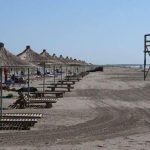TIRANA, March 25- The Balkan countries are suffering from an absence of labor force due to emigration and population aging. Croatia for example is demanding labor force from its neighbouring countries, the Serbian government is looking forward to a long-term solution, whereas the Albanian government doesn’t seem to be taking this issue seriously.
The decline in birth rates, the increased life expectancy, and emigration are some of the main factors impacting the lowering in labor force in the Eastern European countries and the Balkans. This has turned into another issue that these states have to suffer, among many other. Balkan media have been largely writing on this concerning issue lately, as it profoundly lowers the productivity and competitiveness of countries, and mostly deepens the deficit in the pension funding scheme.
Monitor has previously reported that this is also turning into a concerning issue in many sectors in Albania. Representatives from the main industries in the country admitted that apart from an unfavorable environment for entrepreneurships, a labor force absence has turned into a difficult challenge to solve. The attire industry, agriculture, and tourism have started to suffer mostly from the lack of workers. However, the complaints are coming from all sectors, especially in the public healthcare services. The low wages and the emigration are the main reasons, leaving the businesses with no options.
Data from the State Institute of Taxes claim that in the following decade the labor force will drop in higher speed than the general population. INSTAT foresees that the labor force to have dropped by 18 percent on 2030 in all regions, apart from Tirana and Durres that have added population from inner migration.
Apart from emigration this phenomenon is also faced by the low birth rates which on their behalf have increased a tension on the market’s perspective. The natural increase of the population decreased by 35.4 percent in the last quarter of 2018 when compared to the same period on 2017. According to INSTAT this decline occurs mostly in the regional cities, as Tirana has still a relatively high birth rate as it is the most populated city in Albania.
Croatia urgently needs foreign labor force
The decline in birth rates, increased life and alarming numbers of emigrants are some of the shared reasons the Croatian country and its neighbours are suffering in decreasing labor force. During the cold Bosnian winter in the beginning of December 2018, a delegation from the Croatian Jadranka hotellerie group made some meetings in three different cities of Northeast Bosnia. The meetings were made at the cities of Tuzla, Bijeljina, and BrÄko in order to recruit workers and take them at Mali LoŠ¡inj and Cres.
Even though the touristic season won’t start until summer, the high labor force absence during 2018 have made businesses to start planning ahead of summer, as the gap is expected to increase during 2019. The wages start at 500 euros, and during 2018 there have been presence of foreign workers in Croatia. In the moments when the Croatian economy was starting to recover after the crisis, its citizens have been already traveling towards Germany or Ireland after it became a EU member.
With over 9000 thousand working permissions for foreign workers in the country, the Croatian government accepted a record of 21210 new incomers from non-EU countries during 2018. The number then increased to 29769. The main sectors were construction and tourism, followed by the metal working industry, ship construction, transport, food and conservation industry, the technology sector and agriculture. A number of sectors opened jobs both for qualified and unqualified.
The lack of labor force is an issue present in other Eastern European countries. In Hungary massive protests were organized against Prime Minister Viktor Orban’s decision to prolong the working hours to 400 hours a years, trying to dimly hide the absence of labor force. In the fours counties of Visegrad (Czech Republic, Hungary, Poland, Slovakia) are estimated a 520 thousand job vacancies, mainly due to lower birth rates and emigration towards Western Europe, similarly as in Croatia.
“We are in the situation of great demographic changes,” said Iva Tomic from the Zagreb Institute of Economics.
There are two sides of the coin that have the highest impact on this phenomenon, the decline in birth rates on one side, and the rapidly increased life expectancy. Due to the unstoppable lowering birth rate, the number of youth entering the market is decreasing. Meanwhile the number of persons on working age is decreasing. Adding to the factors the emigrants, reaching a 200 thousand between 2009 and 2017 of which 47 percent are 25-44 years old, the labor force absence gap is increased, thus foreign workers are expected to lower it.
Labor force import
Since 1980, Croatia has welcomed a considerable number of workers from other Yugoslav republics, particularly Bosnia and Herzegovina and Serbia, who have been employed mainly in the construction and tourism sectors. According to Iva Tomic, “these countries are also facing with the declining number of working-age people who, if they choose to migrate, prefer to go to rich Western European countries. One should not forget the fact that a large number of Bosniaks have Croatian citizenship (and consequently passports), and enjoy the same status as Croats in the European labor market,” he further said.
Since the “reserves” of the former Yugoslavia began to decline (and continue to decline), the Croatian business community began to look beyond the country’s borders to replace these shortcomings. In March 2018, Croatian Labor and Pension Minister Marko Pavic went to Ukraine with the stated intention to bring with him seasonal workers in Croatia. His speech had exaggerated grades by describing the Croatian lands as the promised land for the future. Currently, the number of Ukrainians who have received a permit to work in Croatia is more than 500 people.
According to many indicators, this figure is expected to increase over the next few years. Although in low figures, workers from countries such as India or Egypt have also come to Croatia. However, in October 2018 there were still 10,133 vacancies within the quota system. What makes job offers in Croatia unattractive is the low level of wages, much lower than the wage level in countries with a long tradition of welcoming immigrants. With the exception of certain professions, for example cooks, salaries for unqualified workers are far below the threshold of 1000 euros per month.
A certain enthusiasm
Some of the most enthusiastic supporters of import labor are undoubtedly the Croatian Chamber of Commerce and the Union of Employers, who fear worsening labor shortages in the near future. In fact, according to some recent estimates, Croatia has started in 2019 with a labor shortage of 15,000 to 20,000 workers. Advisor to the Croatian Chamber of Commerce, Davorko Vidović, advises that the number of workforce imported not only from Ukraine, but also from Syria, Lebanon, Jordan and Egypt should be increased.
The issue of increasing the import of labor from foreign countries raises many other questions at the same time. Despite all the efforts to attract foreign workers to come to work in Croatia, the unemployment rate remains high in this country. At the beginning of 2018, it was 8.4%, and at the end of it, in November it reached 9.1%. According to SiniŠ¡a MiliÄić from VaraŠ¾din’s regional union, Croatia lacks the will to create attractive conditions and permanent jobs, although the cost of such actions is high, the removal of talented young people and the deepening of the labor shortage gap.
Numerous and often overstated statements to accept a large number of workers from different countries hide another reality where prejudice seems to be growing, which has become the object of a xenophobic political and media campaign. Opening the borders of the Croatian state to the import of workers from different countries is in sharp contrast to the hostile attitude towards refugees entering the Balkans. Integration of these refugees into the Croatian labor market remains a rare phenomenon.
Immigrants should come mainly from Eastern European states, which according to Radimir Cacic of HNS, will increase the number of Christian emigrants. The so-called “demographic catastrophe” has also been one of the most important issues for the country’s President, Kolinda Grabar Kitarović, who has called for taking the necessary measures to change this trend. In the same line, there is also the idea of facilitating the acquisition of Croatian citizenship for the second or third generations by removing the requirement to necessarily recognize the Croatian language and the habits of Croatian society.
Global impact
Although there may be very few who would deny Croatia’s necessity for importing foreign workforce, controversy against the Marrakech Agreement on lawful and controlled emigration is increasing. Croatia has liberalized without any obstacles the emigration, which brings to mind the campaign against the Istanbul Convention. In support of this line is mainly the President of the country, Kolinda Grabar Kitarović.
While at first she seemed optimistic and expressed enthusiastic support for the United Nations Secretary General’s Convention, Antà³nio Guterres, she quickly retired from this position and decided not to participate in the Marrakesh Agreement, which was held in November passed. She also used the interview given to one of the well-known presenters, Velimir Bujanec, to reiterate her stand against this agreement.
The center-right Croatian government, shocked by the sudden turn of the country’s president, kept its word and sent to the summit Interior Minister Davor BoŠ¾inovic. The Marrakesh Agreement has also created a conflict between the moderate wing represented by Plenkovic’s national prime minister and the nationalist wing represented by the country’s president, Kolinda Grabar-Kitarović. Minister BoŠ¾inovic said in Marrakesh that he was opposed to all false news about immigration and confirmed the support for a global deal to fix this phenomenon by “assuring” citizens that “the Croatian state and Croatian police will defend itself as Croatia’s citizens and guests.”
With regard to foreign policy, the dispute over the Global Pact also reflects the separation of a right-wing closer to the Visegrad group, using anti-empirical policy as their main issue, and a right-wing of the more moderate Western-European center. Each of them does not contradict each other when it comes to immigration but systematically and “resolutely” uses violence to control their borders.
Serbia is trying to stop the lowering of population
The challenge of Serbian Labor Minister Zoran Djordjevic is to stop the decline in the number of population, which has shrunk by more than 5 percent over the last decade, writes Bloomberg’s journalist in Serbia Gordana Filipovic. Bloomberg writes that Z. Djordjevic po pà«rballet me pengesa tà« njà«jta si ato nà« à§do vend tjetà«r tà« Rajonit tà« Ballkanit, si nivelet relativisht tà« ulà«ta tà« pagave, papunà«sia e lartà« dhe vende pune tà« paguara mà« mirà« nà« shtetet fqinje tà« Bashkimit Europian.
He has hired a team of economists and statisticians, led by an immigration expert to address one of the biggest economic and demographic problems in Europe. If it succeeds, the plan will impact the steady growth of Serbia’s economy, increase foreign investment in the country, and possibly implement President Aleksandar Vucic’s plan to make Serbia part of the EU in the next decade said the Press Office of the Ministry of Labor.
“These are the weapons we can use,” said Djordjevic, who is former financial executive and former Defense Minister. “By the time we join the EU, we want Serbia to be one of the states to rank somewhere in the middle, while emigration is an issue that will happen in other countries.”
Serbia is not alone in this regard. Neighboring Albania, Bosnia and Herzegovina, North Macedonia and Montenegro are also seeking to become part of the EU. Croatia and neighboring Bulgaria are already members of the EU, however this status has in fact helped to intensify the exodus of their citizens. Bulgaria, which is suffering from a very low level of fertility, is facing a high decline in its population.
Sergei Guriev, chief economist at the European Bank for Reconstruction and Development, said that the Balkans region is facing a very difficult situation, which has been exacerbated by the low level of living standards. The state of Serbia is still on the side of weak states, and when Serbia reaches today’s level of Georgia, Turkey or Hungary, further development will reduce emigration, concluded Mr. Guriev.
According to a report by the Organization for Economic Co-operation and Development, about 60% of the 415,000 Serbs who fled their country during the period 2007-2016 migrated to Germany. The unemployment rate surpassed 11% at the end of last year. However, annual growth of 3.5% in the fourth quarter is higher than in 2017, and direct investments of 1.4 billion euros (1.6 billion dollars) from mid-last year seem to be on the way proper to mark more growth.
Djordjevic’s plan is to stop the removal of workers from Serbia and build more factories, a strategy that has positively influenced and helped states like Hungary, Slovakia, the Czech Republic and Poland. At the same time, the Serbian Labor Minister said the country should not pay attention to creating a model based on free labor but also on skilled workers. “Our idea is for Serbia to be different,” Minister Djordjevic said at the end.










